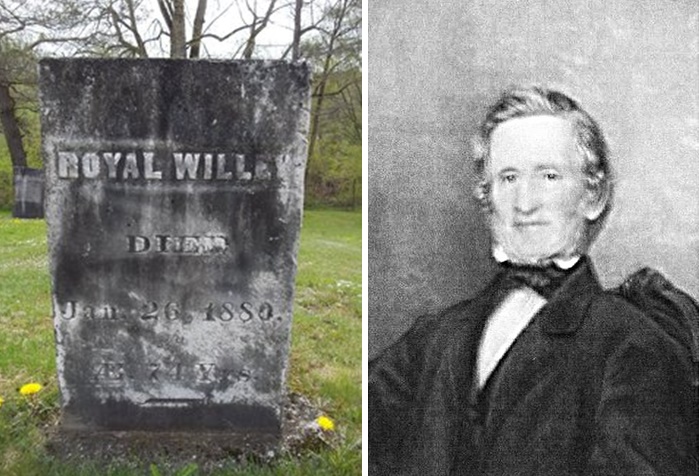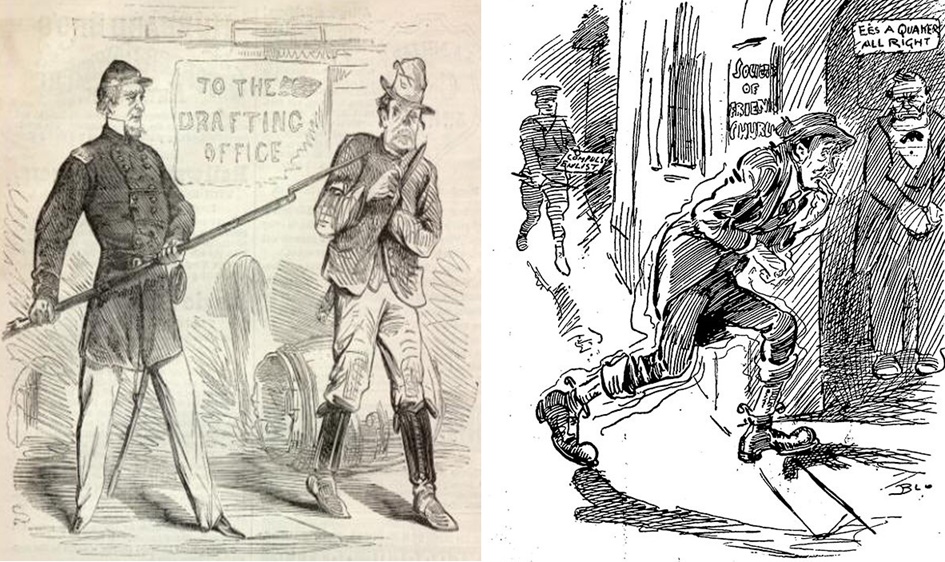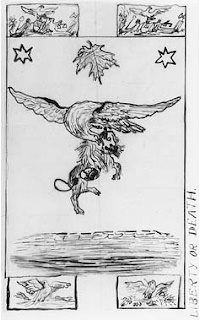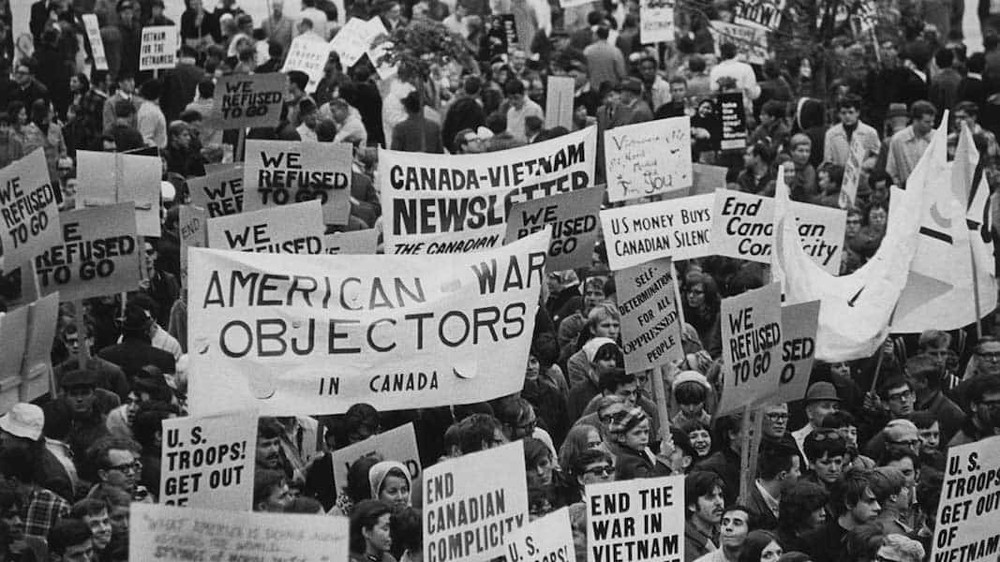Politics and the border
At the end of the 1830s a rebellion was brewing in Upper and Lower Canada. Faced with widespread unrest, militia groups were strengthened and about 400 to 500 volunteers were recruited in the townships of Brome, Stanstead, Sherbrooke and Sutton. In Abercorn alone, 64 men, including one named Royal Willey, volunteered in August 1838 to track down the patriots. Several members of Willey’s family served throughout the century as defenders of the border. In 1864, eight Willeys are listed on the Militia Roll of Sutton Township.

Royal Willey, who is buried in Old Abercorn Cemetery, was in the militia in 1837. On the right is a portrait of James Willey in 1864.
Others joined Hunter’s Lodges, a secret society of exiled patriots and their English-speaking supporters on both sides of the border who challenged British power in North America. Hunter’s Lodges were established in Potton, Bolton, Shefford and Sutton Townships. In the latter locale, Dr. Frederick Cutter was the target of a gunman because he had expressed sympathy for Louis-Joseph Papineau and the Patriotes. Obviously, not everyone was a loyalist!
Many Canadians from Sutton and Potton Townships fought on the side of the North during the American Civil War (1861 to 1865). Conscription was an issue both in the North and the South. There were demonstrations against it and many Americans fled to Canada to avoid it. They were called “skedaddlers”, a word whose origin remains a mystery to this day.

A conscript is pushed manu militari towards the recruitment office; another tries to take refuge in a church.
From then on, whenever the United States went to war, conscientious objectors and conscripts who refused to be used as cannon fodder went into hiding. Known by various terms (slackers, shirkers, or draft dodgers), all were unflattering epitaphs associated with being lazy or dodgy. A lot of them took refuge on the Canadian side of the border. During the Vietnam War, in particular, the region hid many young Americans who’d been drafted into the military. They were well received by Canadians critical of the war.



